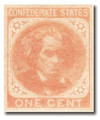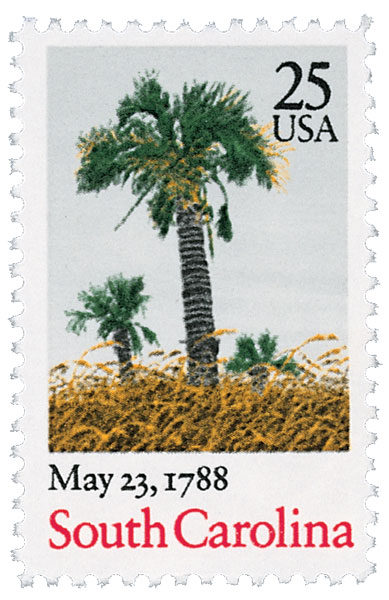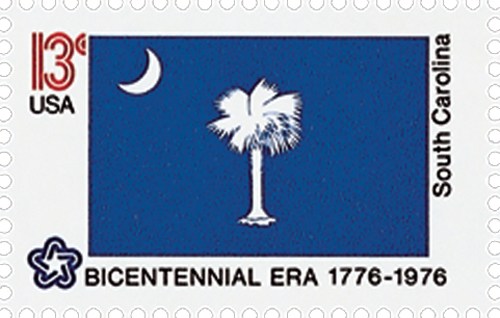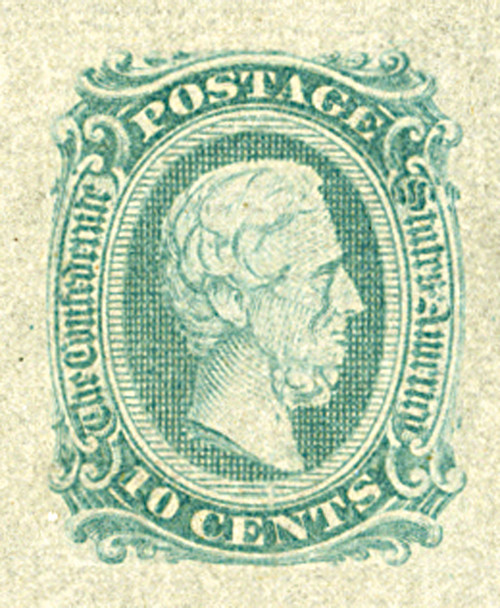
# CSA14 - 1862 1c Confederate States - John C. Calhoun - orange
Scarce Unissued
Confederate Stamp
400,000 Printed –Over 140 Years Ago!
CSA #14 survived the Civil War in mint-fresh condition! Now you can own this direct tie to America’s most tragic war.
At the outbreak of the Civil War, the Union controlled most of the federal agencies – including the postal service. The Confederate States of America rushed to produce their own postage stamps.
CSA #14 features John Calhoun of South Carolina, vice-president under John Quincy Adams and Andrew Jackson. An advocate of slavery, Calhoun argued that each state was self-governing – endearing him to the Southern states and earning a place on the new 1¢ postage stamp.
Intended to satisfy the planned 1¢ drop letter rate, CSA #14 was printed and delivered to the Confederate government. However, the cost of fighting the Civil War forced the actual drop letter rate to 2¢ before the Confederate Postal Service began operating. The entire supply of 400,000 unused CSA #14 stamps was discovered after the war ended.
The 1¢ Calhoun stamp is an important part of U.S. history. Own this scarce stamp in mint condition – order right away.
South Carolina Secedes From The Union
Well before the start of the American Civil War, South Carolina came into conflict with the federal government. South Carolina depended heavily on foreign trade and federal tariffs discouraged foreign trade.
In 1828, soon after an economic depression struck the U.S., Congress raised tariffs. This law became known as the “tariff of abominations.” Anti-federal sentiment spread throughout the state. Vice President John C. Calhoun, a South Carolinian, wrote the “South Carolina Exposition,” which claimed that no state could be bound by a law it deemed unconstitutional.
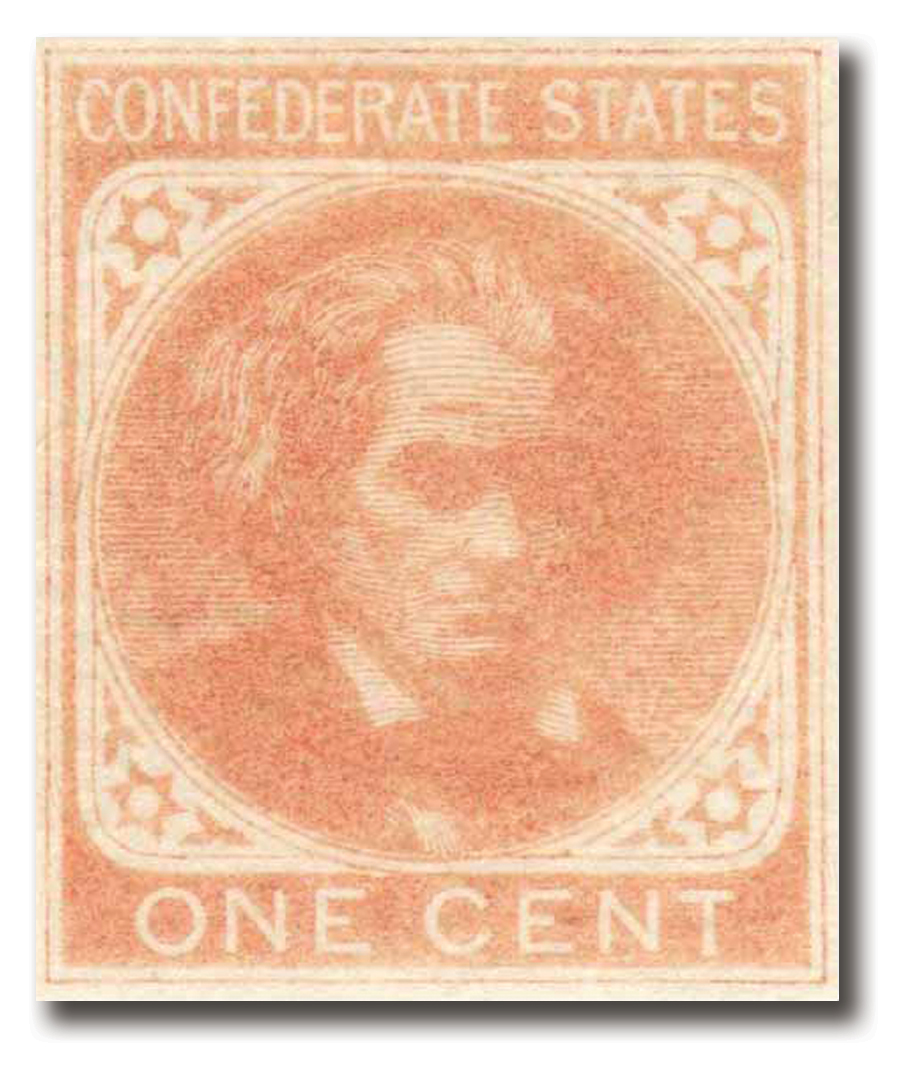
When tariffs were raised again in 1832, the state passed the Ordinance of Nullification. This ordinance declared the tariff acts of 1828 and 1832 void. This action prompted President Andrew Jackson to threaten sending troops to enforce federal law. In 1833, Congress passed a compromise tariff bill, and the Ordinance of Nullification was repealed.
By the 1860s, South Carolina had the largest percentage of slaves in the U.S. – 57% of the state’s population was slaves with 46% of families owning at least one slave. The issue of slavery in America became a major point of contention in the mid-1800s. Violent clashes, such as those at Harpers Ferry, brought national attention to the debate. By the election of 1860, the nation was split on the issue.
According to one South Carolina politician, “If the Republican Party with its platform of principles, the main feature of which is the abolition of slavery and, therefore, the destruction of the South, carries the country at the next Presidential election, shall we remain in the Union, or form a separate Confederacy? This is the great, grave issue. It is not who shall be President, it is not which party shall rule – it is a question of political and social existence.”
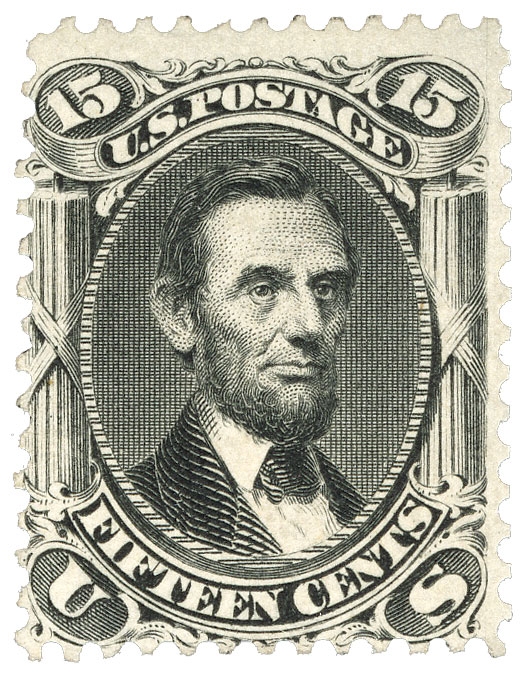
Abraham Lincoln faced Illinois Senator Stephen Douglas and two pro-slavery candidates in the 1860 presidential race. When the results were tallied, the pro-slavery vote had been divided among the three opposing candidates and Lincoln easily won the November 6 election. Any hope Southern Democrats had of preserving their way of life appeared to be dashed.
Days later, the South Carolina General Assembly passed the “Resolution to Call the Election of Abraham Lincoln as U.S. President a Hostile Act” and announced the state intended to secede from the United States. The general assembly then called for a state convention to consider secession and selected delegates. The secession convention met on December 17 in Columbia and voted unanimously 169-0 to secede from the United States.
The ordinance was officially adopted on December 20, 1860. That day South Carolina became the first state to secede from the Union. President James Buchanan proclaimed the secession illegal, but did nothing to stop it. Days later, on December 24, the committee drafted a Declaration of the Immediate Causes Which Induce and Justify the Secession of South Carolina, which explained why they had seceded. In part, this declaration claimed it was because of “increasing hostility on the part of the non-slaveholding States to the Institution of Slavery.”
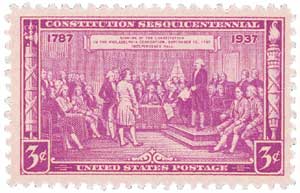
The declaration also criticized the free states for refusing to enforce the Fugitive Slave Acts. They claimed it went against the 4th article of the Constitution: “No person held to service or labor in one State, under the laws thereof, escaping into another, shall, in consequence of any law or regulation therein, be discharged from such service or labor, but shall be delivered up, on claim of the party to whom such service or labor may be due.” The declaration went on to say that the non-slaveholding states had broken this agreement, releasing South Carolina from its obligation to be part of the Union. (Read the full text of the declaration here.)
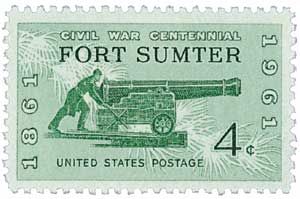
In the coming months, South Carolina prepared for an expected attack from the US military and also worked to convince other states to secede. They succeeded and between January and May 1861, ten more states joined them, creating the Confederate States of America that February. The first battle of the war would be fought in South Carolina that April.
Scarce Unissued
Confederate Stamp
400,000 Printed –Over 140 Years Ago!
CSA #14 survived the Civil War in mint-fresh condition! Now you can own this direct tie to America’s most tragic war.
At the outbreak of the Civil War, the Union controlled most of the federal agencies – including the postal service. The Confederate States of America rushed to produce their own postage stamps.
CSA #14 features John Calhoun of South Carolina, vice-president under John Quincy Adams and Andrew Jackson. An advocate of slavery, Calhoun argued that each state was self-governing – endearing him to the Southern states and earning a place on the new 1¢ postage stamp.
Intended to satisfy the planned 1¢ drop letter rate, CSA #14 was printed and delivered to the Confederate government. However, the cost of fighting the Civil War forced the actual drop letter rate to 2¢ before the Confederate Postal Service began operating. The entire supply of 400,000 unused CSA #14 stamps was discovered after the war ended.
The 1¢ Calhoun stamp is an important part of U.S. history. Own this scarce stamp in mint condition – order right away.
South Carolina Secedes From The Union
Well before the start of the American Civil War, South Carolina came into conflict with the federal government. South Carolina depended heavily on foreign trade and federal tariffs discouraged foreign trade.
In 1828, soon after an economic depression struck the U.S., Congress raised tariffs. This law became known as the “tariff of abominations.” Anti-federal sentiment spread throughout the state. Vice President John C. Calhoun, a South Carolinian, wrote the “South Carolina Exposition,” which claimed that no state could be bound by a law it deemed unconstitutional.

When tariffs were raised again in 1832, the state passed the Ordinance of Nullification. This ordinance declared the tariff acts of 1828 and 1832 void. This action prompted President Andrew Jackson to threaten sending troops to enforce federal law. In 1833, Congress passed a compromise tariff bill, and the Ordinance of Nullification was repealed.
By the 1860s, South Carolina had the largest percentage of slaves in the U.S. – 57% of the state’s population was slaves with 46% of families owning at least one slave. The issue of slavery in America became a major point of contention in the mid-1800s. Violent clashes, such as those at Harpers Ferry, brought national attention to the debate. By the election of 1860, the nation was split on the issue.
According to one South Carolina politician, “If the Republican Party with its platform of principles, the main feature of which is the abolition of slavery and, therefore, the destruction of the South, carries the country at the next Presidential election, shall we remain in the Union, or form a separate Confederacy? This is the great, grave issue. It is not who shall be President, it is not which party shall rule – it is a question of political and social existence.”

Abraham Lincoln faced Illinois Senator Stephen Douglas and two pro-slavery candidates in the 1860 presidential race. When the results were tallied, the pro-slavery vote had been divided among the three opposing candidates and Lincoln easily won the November 6 election. Any hope Southern Democrats had of preserving their way of life appeared to be dashed.
Days later, the South Carolina General Assembly passed the “Resolution to Call the Election of Abraham Lincoln as U.S. President a Hostile Act” and announced the state intended to secede from the United States. The general assembly then called for a state convention to consider secession and selected delegates. The secession convention met on December 17 in Columbia and voted unanimously 169-0 to secede from the United States.
The ordinance was officially adopted on December 20, 1860. That day South Carolina became the first state to secede from the Union. President James Buchanan proclaimed the secession illegal, but did nothing to stop it. Days later, on December 24, the committee drafted a Declaration of the Immediate Causes Which Induce and Justify the Secession of South Carolina, which explained why they had seceded. In part, this declaration claimed it was because of “increasing hostility on the part of the non-slaveholding States to the Institution of Slavery.”

The declaration also criticized the free states for refusing to enforce the Fugitive Slave Acts. They claimed it went against the 4th article of the Constitution: “No person held to service or labor in one State, under the laws thereof, escaping into another, shall, in consequence of any law or regulation therein, be discharged from such service or labor, but shall be delivered up, on claim of the party to whom such service or labor may be due.” The declaration went on to say that the non-slaveholding states had broken this agreement, releasing South Carolina from its obligation to be part of the Union. (Read the full text of the declaration here.)

In the coming months, South Carolina prepared for an expected attack from the US military and also worked to convince other states to secede. They succeeded and between January and May 1861, ten more states joined them, creating the Confederate States of America that February. The first battle of the war would be fought in South Carolina that April.



